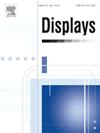Cross-coupled prompt learning for few-shot image recognition
IF 3.7
2区 工程技术
Q1 COMPUTER SCIENCE, HARDWARE & ARCHITECTURE
引用次数: 0
Abstract
Prompt learning based on large models shows great potential to reduce training time and resource costs, which has been progressively applied to visual tasks such as image recognition. Nevertheless, the existing prompt learning schemes suffer from either inadequate prompt information from a single modality or insufficient prompt interaction between multiple modalities, resulting in low efficiency and performance. To address these limitations, we propose a Cross-Coupled Prompt Learning (CCPL) architecture, which is designed with two novel components (i.e., Cross-Coupled Prompt Generator (CCPG) module and Cross-Modal Fusion (CMF) module) to achieve efficient interaction between visual and textual prompts. Specifically, the CCPG module incorporates a cross-attention mechanism to automatically generate visual and textual prompts, each of which will be adaptively updated using the self-attention mechanism in their respective image and text encoders. Furthermore, the CMF module implements a deep fusion to reinforce the cross-modal feature interaction from the output layer with the Image–Text Matching (ITM) loss function. We conduct extensive experiments on 8 image datasets. The experimental results verify that our proposed CCPL outperforms the SOTA methods on few-shot image recognition tasks. The source code of this project is released at: https://github.com/elegantTechie/CCPL.
交叉耦合提示学习用于少镜头图像识别
基于大型模型的提示学习在减少训练时间和资源成本方面显示出巨大潜力,并已逐步应用于图像识别等视觉任务中。然而,现有的提示学习方案要么来自单一模态的提示信息不足,要么多种模态之间的提示交互不足,导致效率和性能低下。为了解决这些局限性,我们提出了交叉耦合提示学习(CCPL)架构,该架构设计了两个新颖的组件(即交叉耦合提示生成器(CCPG)模块和交叉模态融合(CMF)模块),以实现视觉提示和文本提示之间的高效交互。具体来说,CCPG 模块采用交叉注意机制自动生成视觉和文本提示,每个提示都将利用各自图像和文本编码器中的自注意机制进行自适应更新。此外,CMF 模块还实现了深度融合,利用图像-文本匹配(ITM)损失函数加强输出层的跨模态特征交互。我们在 8 个图像数据集上进行了广泛的实验。实验结果验证了我们提出的 CCPL 在少量图像识别任务上优于 SOTA 方法。该项目的源代码发布于:https://github.com/elegantTechie/CCPL。
本文章由计算机程序翻译,如有差异,请以英文原文为准。
求助全文
约1分钟内获得全文
求助全文
来源期刊

Displays
工程技术-工程:电子与电气
CiteScore
4.60
自引率
25.60%
发文量
138
审稿时长
92 days
期刊介绍:
Displays is the international journal covering the research and development of display technology, its effective presentation and perception of information, and applications and systems including display-human interface.
Technical papers on practical developments in Displays technology provide an effective channel to promote greater understanding and cross-fertilization across the diverse disciplines of the Displays community. Original research papers solving ergonomics issues at the display-human interface advance effective presentation of information. Tutorial papers covering fundamentals intended for display technologies and human factor engineers new to the field will also occasionally featured.
 求助内容:
求助内容: 应助结果提醒方式:
应助结果提醒方式:


